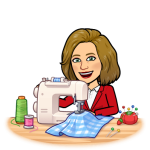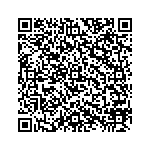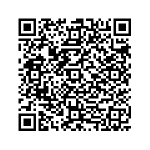11 Sewing Supplies
Sheri Deaton
Sewing Supplies
Sewing supplies can be categorized and organized in many ways. The following organization system has worked for this author and is one that is suggested for novice teachers as they begin to take inventory of their supplies and organize their apparel production labs. Consider the following categories as possible categories for the organization in your sewing laboratory.
Construction Aids
While not needed on every project, these items can save time and make construction easier. Examples: Basting tape, dissolvable basting thread, fabric glue, fusible thread, fusible web, liquid seam sealant, and paper-backed fusible transfer paper.
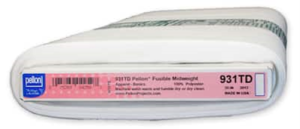
Cutting Equipment
You must purchase and maintain sharp cutting sharp-cutting equipment that creates clean cuts on not only thread and fabric, but on pattern pieces as well (Westfall, 2013). Examples: Pattern weights, pinking shears, pins, rotary cutters, scissors, shears; thread clippers
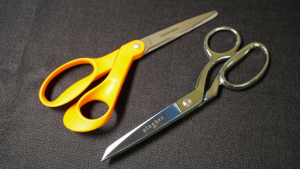
Shears are designed for sewing production and are longer than regular scissors. They have different size holes for the thumb and fingers. Shears should not be used to cut anything but fabric as cutting paper will dull the blades quickly (Apple, 2021).
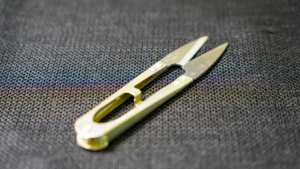
- Did you know that you can sharpen your fabric shears if they have become dull? The simplest way to sharpen fabric shears is to take a piece of steel wool and cut it with the shears for about one minute. The steel will sharpen the scissors each time they make a pass through the dense material. This is a simple yet effective way to maintain sharp tools, which are necessary for crisp and clean cuts on fabric and patterns.
Hand Sewing Equipment
These are items you will need to sew on a button, to complete a tailor’s tack, or another hand sewing as needed for apparel modification or mending. Examples: Beeswax, emery bag, needles, needle threader, pin cushion, sharps, and thimble
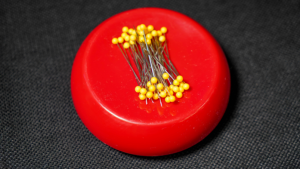
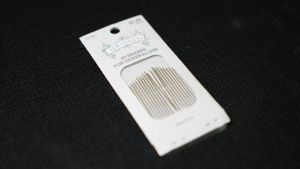
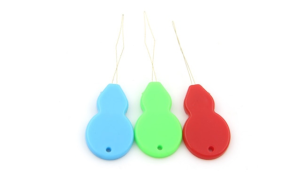
Marking Equipment
Marking equipment is used to transfer the pattern symbols to the fabric. Different tools are used for different purposes, and the fabric type should be considered before selecting the appropriate marking equipment. Examples: chalk, fabric pencils, fabric pens, heat transfer pencils, tracing paper, tracing pens, and tracing wheel
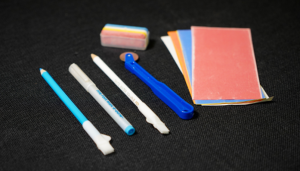
Marking pens/chalk pencils are used to transfer crucial markings from the pattern to the fabric. The type and color of the fabric determine the best method for transferring markings (Apple, 2021).
Measuring Equipment
This category includes all the tools you might use to measure accurately and precisely. Each tool has a slightly different use and not all will be needed for each item constructed. Examples: hem gauge, grid, and bias square rules, seam gauge, tape measure, and yardsticks
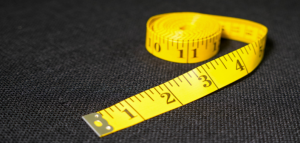
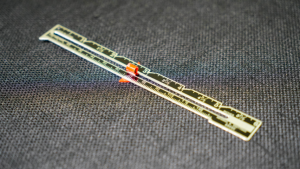
TIP: Do not assume that your students know how to read measuring equipment. Spend time going over how to read these tools before using them in the creation of a product. Practice makes permanent and learning how to read a measuring device is an essential skill for all students to acquire (Deaton, 2021).
Notions
Notions could include anything extra that a pattern might call for. Keeping items together can help you keep track of what you do and do not have and can assist students as they are looking for these items. Examples: bias tape, buttons, elastics, hem tape, hooks and eyes, snaps, twill tape, and zippers
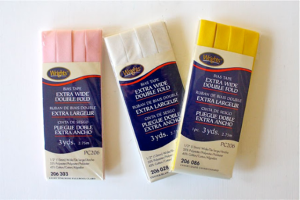
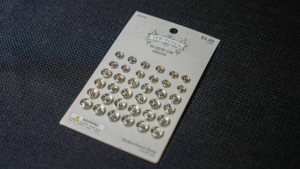
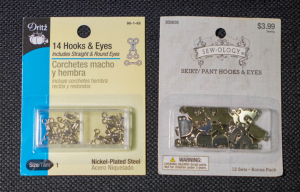
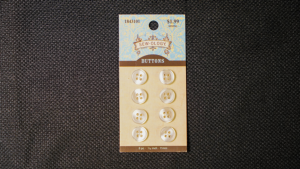
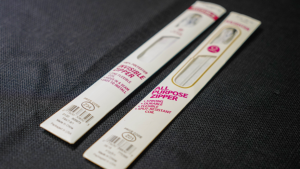
Random but Important
These tools can save several tears and a lot of time if needed in a project. Examples: awl, bodkin, loop turner, point turner, and seam ripper
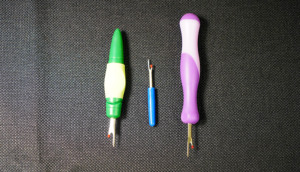
- Did you know that you can sharpen seam rippers? Check out this article by the National Sewing Circle Editors on How to Sharpen Seam Rippers.
Sewing Machine Equipment
It is important to keep an adequate supply of all items needed for the sewing machine. This could include replacement parts or items needed for proper maintenance. Examples: bobbins, duster, machine oil, needles, and tweezers
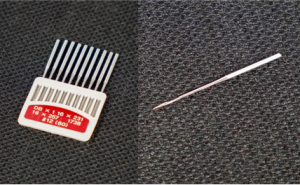
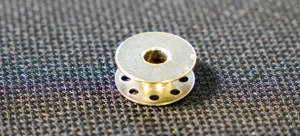
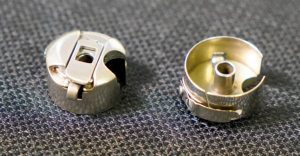
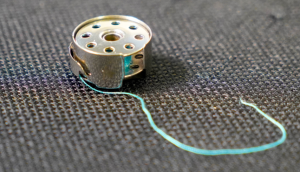
Self-Check
Use the following drag-and-drop assessment to measure your understanding of sewing equipment and supplies now that you have read the text.
Organized Chaos
For many seamstresses and apparel production teachers, the sewing supplies closet, cupboards, or drawers can be one of pure chaos. Organizing sewing supplies according to their usage is a helpful technique; however, the ownership of maintaining this system must be transferred to your students. Encourage your students each day to do a brief drawer/tote check, noting any items that are out of place and putting them back in their place. These small steps every day will lead to an organized classroom instead of “organized” chaos (Deaton, 2021).
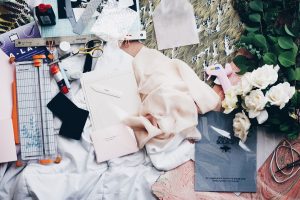
Hemming it Up
According to the Code of Ethics for Arkansas Educators, Standard 4 states:
“An educator entrusted with public funds and property, including school-sponsored activity funds, honors that trust with honest, responsible stewardship.”
Teachers who are entrusted with sewing equipment and supplies should do their part to ensure that they are good stewards of the items entrusted under their care. Students should not be allowed to eat or drink around sewing machines, and all equipment and supplies should be kept in good working order to ensure their effective use and the safety of the students using them. Teachers serve as role models for many concepts in and out of the classroom. Students will see and model a teacher’s approach to the organization and maintenance of equipment if the policies and procedures are taught and consistently reinforced.
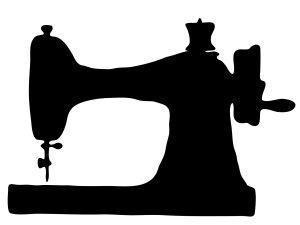
References
Apple, L. (2021). Introduction to Apparel Production Workbook. Uark.pressbooks.pub. Retrieved 20 September 2022, from https://uark.pressbooks.pub/introapparelproductionworkbook/.
Deaton, S. (2021). Teaching Apparel Production. Presentation.
Westfall, M. (2013). Successful sewing. The Goodheart-Willcox Company, Inc.

